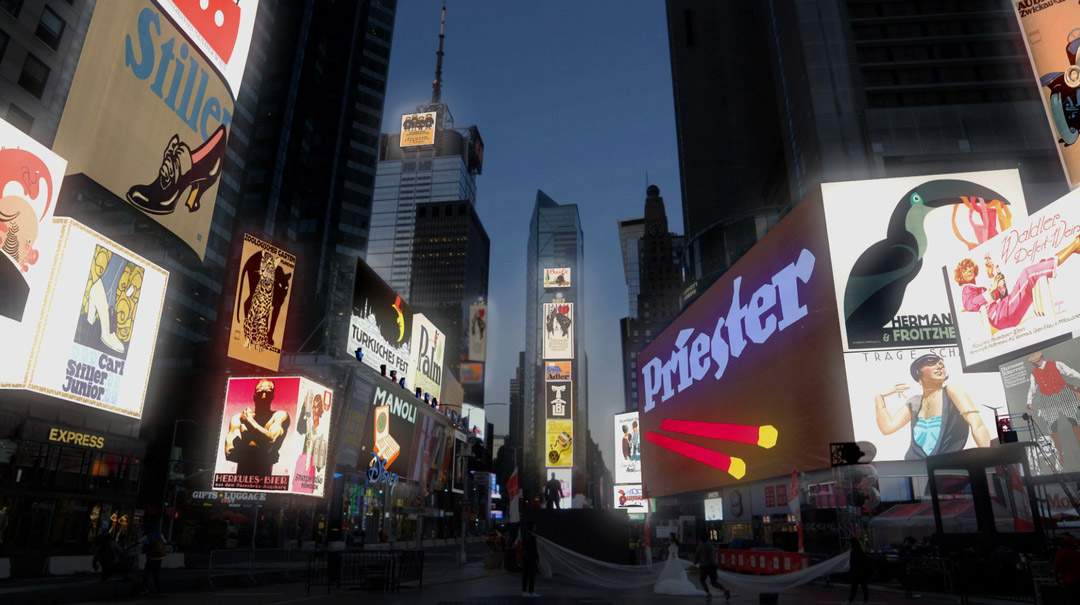An evening dedicated to the link between art and advertising the one that airs tonight, Friday, December 10, 2021, at 9:15 p.m. on Rai 5, as part of the program Art Night hosted by Neri Marcorè. From the first Plakatstil posters, which in the early twentieth century gave rise to modern advertising, to Pop Art, which has taken inspiration and quotations galore from advertising icons, art and advertising are bound by a continuous relationship that reaches to the present day.
To investigate this bond, Art Night is premiering Plakat, a documentary by Adolfo Conti, with photography and editing by Eugenio Persico, produced by Doc Art in co-production with Leonardo Film, NDR, Avrotros, in collaboration with Arte and Rai Cinema, in association with DR, ERT, RSI, with support from Creative Europe Media and Nordmedia. The documentary starts from the cornerstones of advertising: young and beautiful characters, the product and its brand at the center of the composition, and an appealing and entertaining presentation. Cornerstones that are before our eyes every day and are not a recent invention, nor the result of theoretical research or experimentation by the artistic avant-garde. They were born more than a century ago thanks to Lucian Bernhard (1883 - 1972), Ludwig Hohlwein (1874-1949) and Julius Klinger (1876-1942). In 1904 Lucian Bernhard produced the first version of the Priester match poster, the first example of modern advertising, with cubital letters, flat colors, simplified shapes, and product-focused composition. Lucian Bernhard, Ludwig Hohlwein and Julius Klinger revolutionized the approach to advertising and left us with a legacy of ideas that is still valid today. They each created their own style, each thought up original solutions, each made different choices in their lives. Through their works and destinies we will tell the story of the birth of advertising.
Filmed in New York, Vienna, Berlin, Hamburg, Munich, Essen, and Plakat, the documentary Plakat seeks to fill a gap in visual and cultural memory. Belle Époque posters are universally known thanks to the fame of Henri de Toulouse-Lautrec and Alphonse Mucha. In contrast, Plakatstil posters are virtually unknown to everyone. It is generally thought that modern advertising was born in Europe in the late nineteenth century and the 1930s, between Toulouse-Lautrec and the Bauhaus. Not so: it was born in Berlin in the early twentieth century with the Plakatstil, with Lucian Bernhard, Ludwig Hohlwein, Julius Klinger. The protagonists of the documentary go through all the key events of the “short century” and their lives, their destinies intersect now happy, now tragic. After the unrepeatable golden age of the years from 1895 to 1914, all three went through, in different ways, World War I and the postwar confusion. They went to the United States, either to stay there forever or to return disappointed to Europe, they faced Nazism, Hohlwein gave him support, Klinger was killed in a death camp. After the war they were purged, condemned, or worse still ignored and forgotten. Only a few years ago it was discovered that Julius Klinger had not died in 1950 in Vienna, as had always been believed, but in 1942 in the Minsk concentration camp. While Ludwig Hohlwein ’s diaries (genuine artistic masterpieces, modern manuscripts illuminated in watercolor) are still unpublished and will be shown to the public for the very first time in Plakat. Again, the house Bernhard designed and furnished for himself in Manhattan is still intact today: it is a summation of his aesthetic and graphic thinking. Adolfo Conti’s crew was allowed to film it in its pristine beauty.
The ingenious insights of Bernhard, Hohlwein and Klinger, their visual experiments and graphic inventions are before our eyes every day. Just look at the list of fonts available for our computer and we will probably find Bernhard MT Condensed, one of the 36 fonts invented by Lucian Bernhard. Then again, the “Audi” and “Bosch” labels, designed by Lucian Bernhard. Or, when we smile at a funny advertisement, we should remember that that smile was born over a century ago thanks to the whimsical imagination of Klinger, who dotted his ads with caricatures and comic figures. When we are tired of seeing gorgeous models winking at us on television or from city walls, let us remember that a century ago Ludwig Hohlwein had grasped the importance of beauty and youthfulness as determining factors in selling a product. This and much more began between Berlin, Munich and Vienna 110 years ago. And this is what the documentary is all about, which has some major awards, such as Best documentary short at the Fine Arts Film Festival in Venice (Los Angeles) in 2018 or the award at the On Art Film Festival in Warsaw, also in 2018.
This is followed by a documentary on the relationship between gallery owner Leo Castelli and Pop Art: an inseparable pair. Thanks to him, American art landed in Europe in the 1960s. During these years, as New York became the undisputed capital of art, Castelli with flair and courage supported innovative artists: Lichtenstein, Rauschenberg, Jones, etc. Above all, he promotes Andy Warhol, who had begun by working as an advertising graphic designer and who brings to museums the same products that can be seen in stores. In this original Teche Rai document, Castelli himself narrates the explosion of the pop phenomenon and its artists.
Art Night is a program by Silvia De Felice and Emanuela Avallone, Massimo Favia, Alessandro Rossi, with direction by Andrea Montemaggiori.
 |
| Tonight on Art Night an award-winning documentary reconstructs the history of Plakatstil |
Warning: the translation into English of the original Italian article was created using automatic tools. We undertake to review all articles, but we do not guarantee the total absence of inaccuracies in the translation due to the program. You can find the original by clicking on the ITA button. If you find any mistake,please contact us.